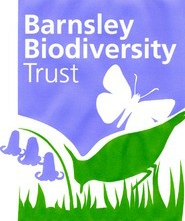

Biodiversity
Action
Plan
Local Priority Habitats: Key objectives
- Raise awareness of the significance and importance of priority habitats
- Review the extent and condition of priority habitats in Barnsley, including surveys for selected sites.
- Collect and analyse records of populations and assemblages of wildlife species for priority habitats with additional surveys in selected sites.
- Ensure that sites with priority habitat of significant conservation value are protected through statutory or local designation. [SSSI or LWS]
- Bring sites with identified priority habitat into positive conservation management and favourable condition.
- Create and extend priority habitat where appropriate and significant priority habitat would not be lost or harmed
- Create and maintain wildlife corridors to connect priority habitat sites in a nature recovery network.
Roles:
Land owners and managers:
- follow best practice in managing sites with priority habitats
- take up opportunities to restore and enhance sites with priority habitats
- create and extend priority habitats where appropriate.
Barnsley Council is a land owner and manager and in addition has other roles.
Barnsley Council as planning authority:
- sets conditions in planning applications to ensure that priority habitats’ biodiversity value is maintained and enhanced
Natural England:
- administers countryside stewardship and environmental land management schemes
- undertakes statutory designation and protection of sites with significant habitat
- sets conditions to protect biodiversity and issues licenses
- provides guidance and standing advice
Forestry Commission
- licenses felling and approves woodland management plans
- provides guidelines and sets conditions to protect biodiversity.
Environment Agency protects and improves the environment by
- by regulating major industry, waste and water quality as well as fisheries
- managing the risk of flooding from main rivers and reservoirs
Conservation Bodies provide advice and may offer grants
Voluntary groups and volunteers:
- help with priority habitat conservation
- collect information about condition of priority habitats and provide records of wildlife.
Achievements
- The Local Plan adopted in 2019 protects designated sites and ancient woodland and green space and has specific conditions for allocated development sites to protect and conserve biodiversity.
- Biodiversity Supplementary Planning Document published 2019
- Barnsley Biological Record Centre established to collect and make available records of important sites, habitats and wildlife species.
- Phase 1 habitat mapping has been undertaken across Barnsley.
- Panel set up to designate, review and monitor Local Wildlife Sites (LWS).There has been an increase in the number of designated LWS since 2010
- Lower Dearne Valley Nature Improvement Area iestablished. 2012
- Dearne Valley,Wetlands SSSI designation. 2021/22
Marking progress:
- Extent and condition of local priority habitats
- Local Priority Habitats created
- Corridors between priority habitat sites established
- Sites with Local Priority Habitats in positive conservation management
- Sites with Local Priority Habitats in favourable condition
- Populations and assemblages of wildlife species typical of priority habitats in favourable condition.
Proposed actions
- Establish and maintain inventories of
- Sites with significant priority habitat.
- Sites for potential priority habitat creation or extension.
- Sites for potential green corridors linking priority habitats.
- Carry out nature recovery and natural capital mapping
- Carry out priority habitat creation
- Carry out priority habitat conservation in line with management plans
- Analysis of records of wildlife species in priority habitats in a rolling programme. Every 5 years
- Agree and carry out prioritised LWS designation.
Actions for Priority Habitats
We need to recognise that …
- Some long standing priority habitats are irreplaceable
for example: ancient woodland or unimproved grassland - Some priority habitats are scarce in Barnsley and often elsewhere
for example: lowland heath - Some priority habitats are at higher risk of decline and loss
for example: semi-natural grassland, lowland heath